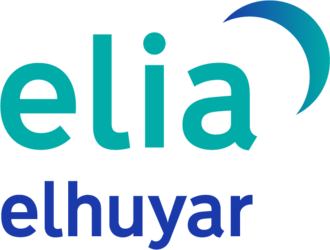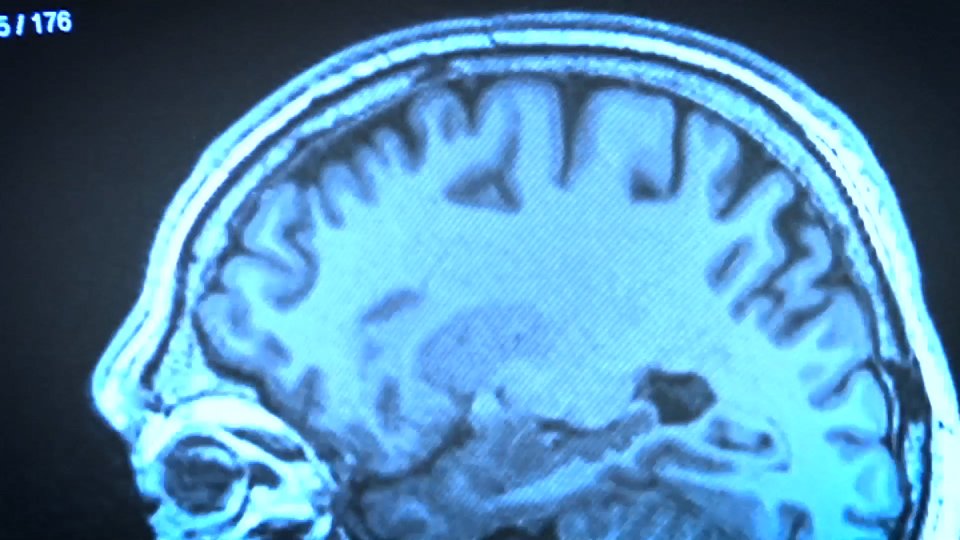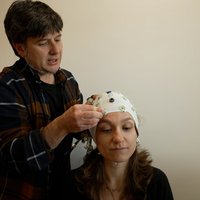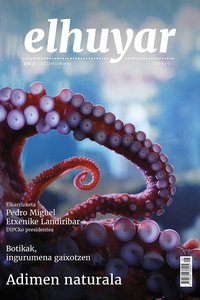Computational thinking through board games
Why learn computational thinking if we're not programmers? Today, more than ever, we must understand and solve problems with logic and creativity. LOMLOE incorporates it into the classrooms and the game, especially board games, is fun, accessible and effective. In this article, we present board games for the development of computational thinking in primary and secondary education.
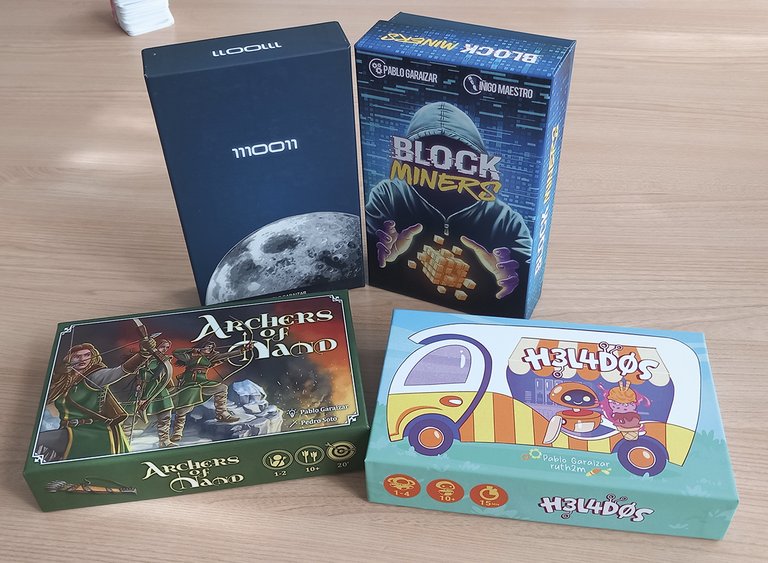
We have technology in almost every aspect of our lives. Not only that, but the mobile phones we carry with us run thousands of line codes every second, giving us access to the universe of information and applications. However, technology also offers many opportunities that have not yet been exploited, as we continue to consider it as an isolated and instrumental discipline. From our perspective on technology, we promote its study in two directions: on the one hand, it should promote the acquisition of knowledge in other areas by those who know it; and, on the other hand, it should encourage the study of how technology from other disciplines of knowledge can contribute to the achievement of broader objectives.
In this hyper-technological context, we want to highlight the importance of computational thinking as a tool to understand the world around us, and not only that: we also want to highlight its ability to solve problems in different areas and drive innovation in the field of education and industry. In 2006, Jeannette M. Wing defined computational thinking as the skill and skill set commonly possessed by computer science professionals in problem solving and system design. Since then, many attempts have been made to better delineate the concept. Denning's definition of computational thinking best explains: "The process of thinking about formulating solutions to problems and how to implement these solutions using computers". This computer does not have to be electronic or mechanical, it could also be human, as anticipated by Alan Turing (1950).
We do not propose that all problems can be solved by applying computational thinking. We rely on the skills of technology while trying to avoid the “technological solution”[2]. However, we believe that many everyday problems have both partial and complete solutions and that these solutions can be posed through computational thinking. In other words, recognizing a problem and solving it automatically through technology empowers many people to make important contributions to collective well-being in a variety of situations.
Computational thinking is an essential element of the interdisciplinary training that we suggest: to solve a problem in a non-technological area (economics, medicine, sociology, etc.) in a computational way, it is not enough to leave this problem in the hands of a computer expert. It is essential that those working outside of technology also practice computational thinking and understand how problems in their field can be solved computationally (these people do not have to be the ones who write the programming code). We also argue that even those who are immersed in the technological universe can take advantage of computational thinking, but not in any way, but above all by investigating the use of computational thinking in non-technological contexts.
Following this approach, we should treat computational thinking as an essential and mandatory skill, not because we want more students to pursue careers focused on computer science or technology, but because these skills complement almost any area of knowledge.
The set of cognitive skills that are associated with computational thinking is composed of the following elements[3]:
- Abstraction: Simplify a system, eliminating complexity and unnecessary details.
- Generalization/pattern recognition: identify parts that are part of the solution to a problem in other problems and reuse them.
- Decomposition: Divide a problem or system into smaller parts to understand/solve/evaluate each one separately.
- Algorithm: Define a sequence of logical steps to solve a problem.
- Evaluation: to ensure that a solution is correct and appropriate in the proposed context.
Since 2022-2023, the LOMLOE (Organic Law for the Modification of the LOE) has incorporated computational thinking into the curriculum of primary and secondary schools, especially in the subjects of Mathematics, Technology and Digitalization. Its objective is to promote the development of skills for logic and creativity to solve problems in the use of digital tools. It reinforces computational thinking as an indirect skill and ensures that it is cultivated and applied at all stages.
There are currently numerous local and international initiatives to promote computational thinking in both primary and secondary education and non-formal education. So we have Hour of Code, CodeWeek or Scratch Day.
All these initiatives have had a positive impact and promoted a better understanding of computational thinking; however, beyond the technological sphere, it is necessary to include this type of training in primary and secondary education, as well as to transform the paradigm. Depending on the level, the state of technological education varies greatly.
And that's the level at which board games come into play, the redundancy of which comes into play. The skills that are cultivated when playing a modern board game are very useful for life: planning, resource management, problem solving, etc. Because of this, many teachers have found that some board games are an ideal tool for learning. Game-based learning is an option along with other techniques that use the playful element of games for the learning process.
Combine the two concepts and we will talk about board games that work on computational thinking. In the field of programming and robotics, we have classics like RoboRally and games like Robot turtles designed for a younger audience. In the latter, we have to configure the actions of some turtles: collect gems of different colors and they have to overcome barriers. As a result of the success of turtle robots, ThinkFun publishers have been working on board games related to computer programming. Codemaster is one of the most fascinating. In this game they propose a series of challenges that are increasingly complex: we have to go to an adventurer to rescue the treasures of different islands, using routes of different colors and avoiding risks. After Codemast, ThinkFun released 3 games from the Code series: On the brink, Robot repair and Rover control.

Next, we will talk about the board games developed by professionals of the Faculty of Engineering of the University of Deusto to work on computational thinking. The first to be developed was the MOON1, which positions us in the last minutes before the Eagle spacecraft's lunar launch. The main goal of the game is not to turn what is a small step for man and a big step for humanity into a total disaster. To do this, we will take control of the internal computer and join the intelligent software that Margaret Hamilton’s team developed to complete the mission. Playing in MOON, we will learn to count in the binary system, as well as to perform the logical and mathematical operations that a real computer would perform (additions and subtractions; rotation and copy of bits; logic gates such as OR, AND, XOR), at the same time we will solve the technical faults that arise and manage the energy correctly. In addition to the ability to compete, MOON allows you to play individually and cooperatively, and through the modular design of the game you can adapt the complexity and duration of the matches to a wide variety of situations.
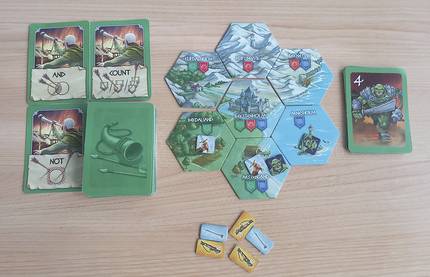
Arqueras de Nand1 is the second game developed at the Faculty of Engineering and developed within the European Compus project (https://compus.deusto.es/). In this case, the wild stocks of orcs invade the Nand Valley. While local warriors lose the battle, Nand’s archers take advantage of the height of their mountains to slaughter enemy troops. In this game, you will have to decide how to protect the valley with the combined action of Nanden warriors and archers before the orcs destroy everything. Nand's Archers is a game to learn the basics of databases (binary code, logical operations and Venn diagrams).
Over the last decade, blockchain-based systems have become increasingly popular, mainly thanks to cryptocurrencies such as Bitcoin or Ethereum. However, most people don’t know what a blockchain is and how it works. The Block Miners2 board game allows students and teachers in the lower grades of elementary school to understand how cryptocurrency works, as well as other blockchain-based systems such as digital asset management systems, educational or health records, and smart contracts.
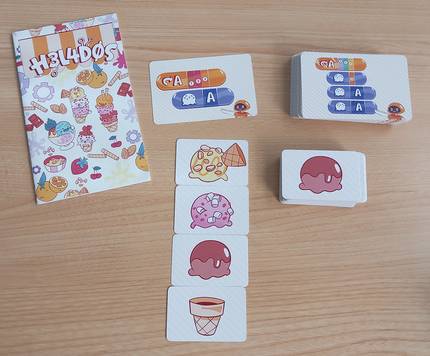
H3L4D0S3 is a solitaire game set in an ice cream parlor controlled by two genuine robots (Bit and Bot) with a lost memory programme. Since the robots have no memory, the player must help them prepare their customers’ orders by programming the operation of the robots through colored cards that allow them to perform loops and actions. This game helps to develop skills associated with computational thinking, such as algorithmic thinking, pattern identification or abstraction.
All these examples help us to see that computational thinking is much more than computer programming and that it can be developed from a very young age with methodologies that replace the use of technology. Board games are a very interesting option for the classroom and are welcomed by both teachers and students in a very positive way. In the Faculty of Engineering, we continue working on the use, design and dissemination of classroom resources that contribute to the development of computational thinking, such as board games.
Follow us on https://trastea.club/
The observations are as follows:
1Moon and Arqueras de Nand Compus are games developed within the framework of the European project funded by the Erasmus+ program of the European Union (2018-1-ES01-KA201-050415).
2Block Miners is a game developed within the European project Pixels and Meeples, funded by the European Union’s Erasmus+ program (2018-1-ES01-KA201-050415).
The 3H3L4DOS game has been developed by professors from the Universities of Alcalá and Deusto to generate scientific interest in the Classrooms within the framework of the JUEGA project. It is funded by the Ministry of Science, Innovation and Universities and the Spanish Foundation for Science and Technology (FECYT) – FCT-22-18656.
The bibliography
[1] By Denning P. According to J. 2017. “Remaining trouble spots with computational thinking”. Communications of the ACM, 60 (6), pp. 33-39.
[2] By Morozov E. 2013. “To save everything, click here. The folly of technological solutionism”. Public Affairs, New York.
[3] Selby C. and Woollard J. 2013. “Computational thinking: the developing definition”. University of Southampton Institutional Repository.
[4] By Wing J. M. 2006. “Computational thinking”. Communications of the ACM, 49 (3), 33-35.
Buletina
Bidali zure helbide elektronikoa eta jaso asteroko buletina zure sarrera-ontzian



